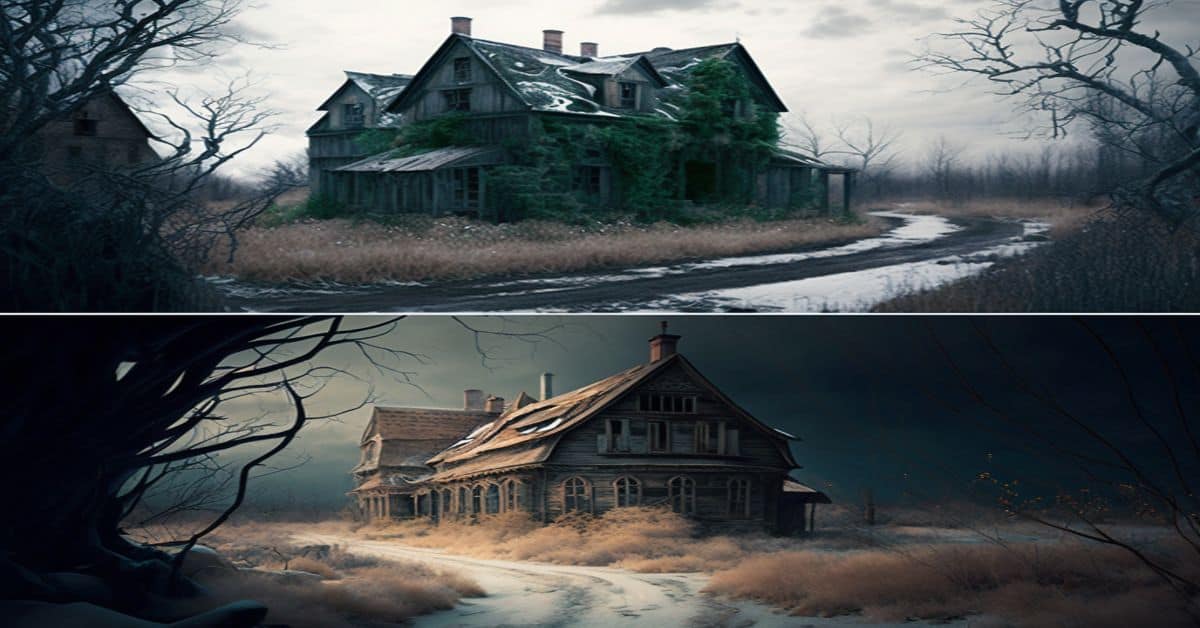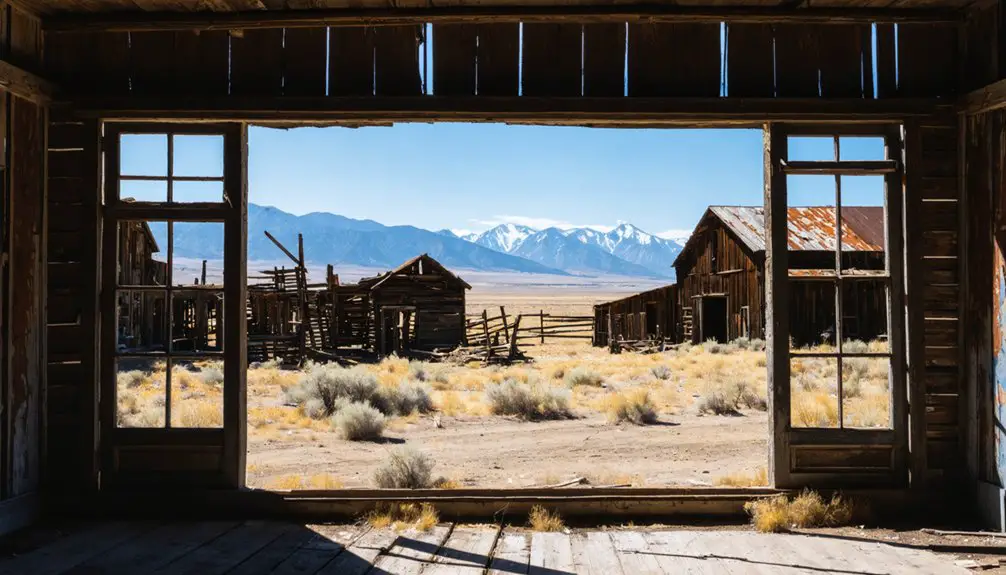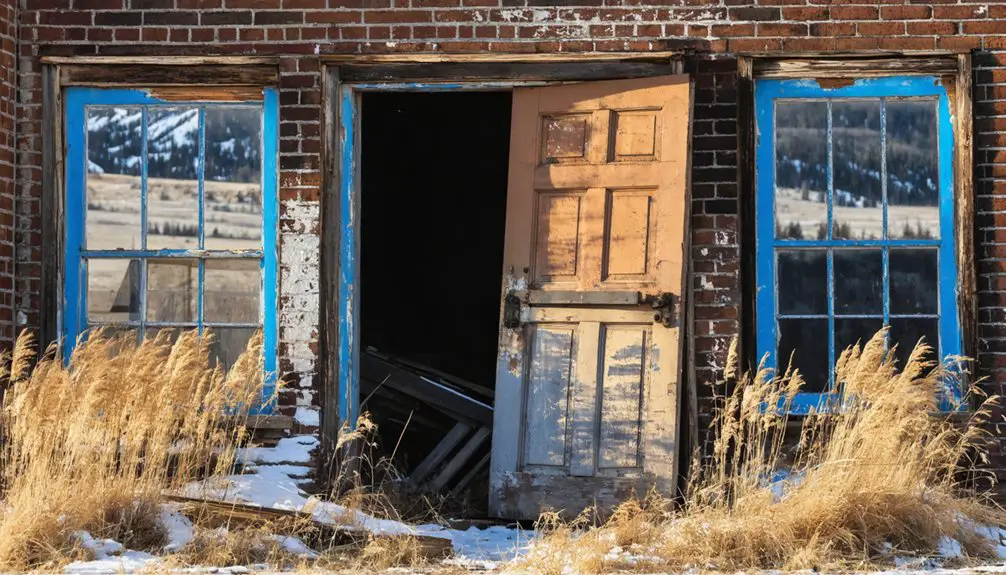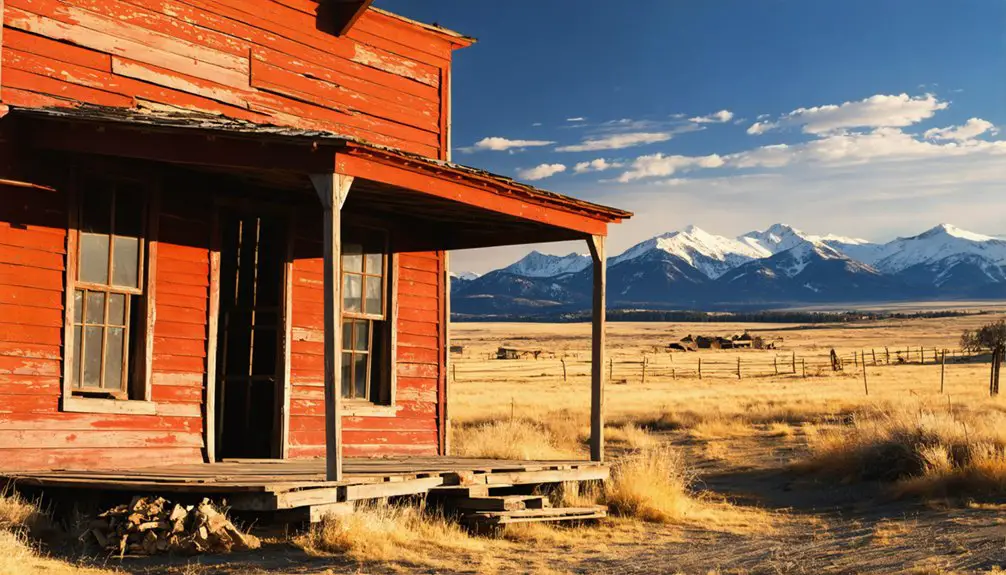In Montana, where antelope and deer outnumber humans, you will find various mammals unlike any other state. But Montana also has a large number of ghost towns. How many ghost towns are there in Montana?
There are approximately 60 ghost towns in Montana. Many surviving buildings preserve much of the region’s past in various architectural styles; some are abandoned, while others have a small population.
Becoming the 41st state to join the Union on November 8, 1889, Montana had a lot of history and a lot of lands. Therefore, there’s a lot of space to cover when identifying ghost towns; let’s examine the following in detail:
Coloma, Montana
The Coloma mining town is just a few miles east of Garnet, Montana, and was founded in 1893. Coloma is located on I-90 between Drummond and Missoula in southern Montana. The Garnet Range Road can also be reached, located southeast of MT 200; Coloma is above Garnet. Its coordinates are 46°50’32 “N 113°22’57” W.
Coloma, sometimes known as “Mystery Camp,” is a ghost town on the Garnet Back Country Byway a few miles north of the more well-known Garnet Ghost Town. Aside from documents indicating it was established in 1893 and underwent substantial gold mining activity beginning in 1896, the Coloma community is little known. The mining camp known as Coloma was on the north side of the device from the garnet base, led by the Clark Fork River.
Between 1897 and 1916, the mine gold district produced approximately $240,000. The mining community extracted gold from 1910-1921 and from 1932-1950. After 1950 this town started losing against the test of time.
The University of Montana has done archeological research at the site. Poles, ventilation systems, pumping machinery, and scraps of narrow-gauge railroad tracks can still be found. Rare wild mountains of western Montana surround it. It’s said to be an accurate representation of the uniqueness in the old west.
Research shows that only a few Americans today could have survived the endless natural disaster, wild animals, and intense physical labor based on its current conditions.
Garnet, Montana
Also known as Montana’s most intact ghost town, Garnet wasn’t exactly built to last. Enterprising miners in the 1980s were more interested in ensuring they extracted the most they could of the underground rather than focusing on developing above.
The gold mining boom in Garnet began in 1897 when a man named Sam Rich hit a vein of gold in his mine just a few miles outside the city; by January 1898, over 1000 people resided in the town.
The eager miners and entrepreneurs constructed quickly and without much planning. A haphazard community was developed, with many buildings built upon existing or future mining claims.
The town had everything it needed to survive, with a few shops and hotels, a doctor’s office, and a school for an estimated 42 students, with numerous saloons scattered around town.
After the 1900s, many miners leased their mines out because gold became scarcer and harder to mine. In 1905 many of the mines were abandoned, and the population was reduced to 150 residents. By 1912, a fire destroyed many of the commercial buildings in town, and sadly by 1930, Garnet was a ghost town.
In 1943, President Roosevelt raised the prices of gold from $16 to $32 an ounce, and the town was temporarily revived; this was very much short-term because when World War II approached, the citizens left, and Garnet once again became a ghost town.
This ghost town is located in Granite County, Montana, with 134 acres. The town’s coordinates are 46°49′31″N 113°20′20″W.
Bannack State Park, Montana
Bannock provided gold, land, fortune, and more. In 1862, gold was discovered along the corners of Willard’s creek in the infamous Lous and Clark expedition. This became one of the first mile claims of gold in Montana. The town achieved a population of over 3000 in only a few months. From merchants to service providers, the area was gold-oriented.
Bannack state park is located in Montana’s southwestern region, Exit #59 on I-15 south of Dillon, Drive 17 miles west on Highway 278. The location coordinates are 45°09′40″N 112°59′44″W.
Approximately $500,000 in gold was being extracted at the time; currently, this being the equivalent of $12.9 million today, this town had tremendous potential. It came to have a bowling alley, drug stores, courthouses, and hotels.
The first ladies to arrive at the town of Bannack came intending to deprive the miners of the gold money, giving the city the monopoly with brothels. They are prevalent for their law approach. Nobody was immune to it; in 1864, the citizens hung the sheriff and two of his deputies because they were involved as leaders of a crime.
Everything arrived at the town by horse, increasing the prices in general. This town was founded on gold-related matters, and so did the people when the gold dried out. By 1938, Bannack was registered as a ghost town.
The city’s historic district has been properly conserved and provides a taste of the old west.
The area is straightforward to locate and is close to Dillon. Visitors can enter the park and most tour structures by walking through the city on a self-guided tour. Overseen by the National Park Service, the buildings are lined up on both sides of a dirt road with wooden sidewalks; it is in a good state of preservation.
Coolidge, Montana
Coolidge ghost town is part of Montana’s mining heritage. The mine failed following the Great Depression. This deserted ghost town is located in southwest Montana and can be reached by traveling west on SR-43 from I-15, then south on NF-73, then east on a dirt road. After that, it’s a 12-mile hike to the historic townsite.
Not many remains are available. However, most of the infrastructure remains, making it worth the trip. A few sheds from the pioneer mountains are very captivating. There were over 350 inhabitants of this town in the 1820s. The high mountains’ abundant wildflowers and excess gold made this town an ideal location.
Coolidge was formerly a thriving mining town. The structures are now abandoned, deteriorating, and in danger of collapsing. It is remote and located on a mountainside distant from civilization. The mine boss’s cabin is still in good shape; the mine was located just a few miles below the town. Although the setup seems organized, this town was disbanded in 1914.
Conclusion
The state of Montana has extensive lands with a long history. Ghost towns are prominent in this state due to gold mining; this peaked, leading to new populated places around gold mines, creating short-term societies that could sustain being in what could be considered the outside world.
There are many particularities about the ghost towns here because they had the potential to thrive and become forces to be reckoned with. Still, the pricing on transporting everything from bigger states to there was an ongoing impacting issue, and gold was less accessible.
They’ve left their mark on the state’s story, and some of the infrastructures are in good shape, making the possibility of a trip a learning experience; a lot of mystery and unknowns remain.



